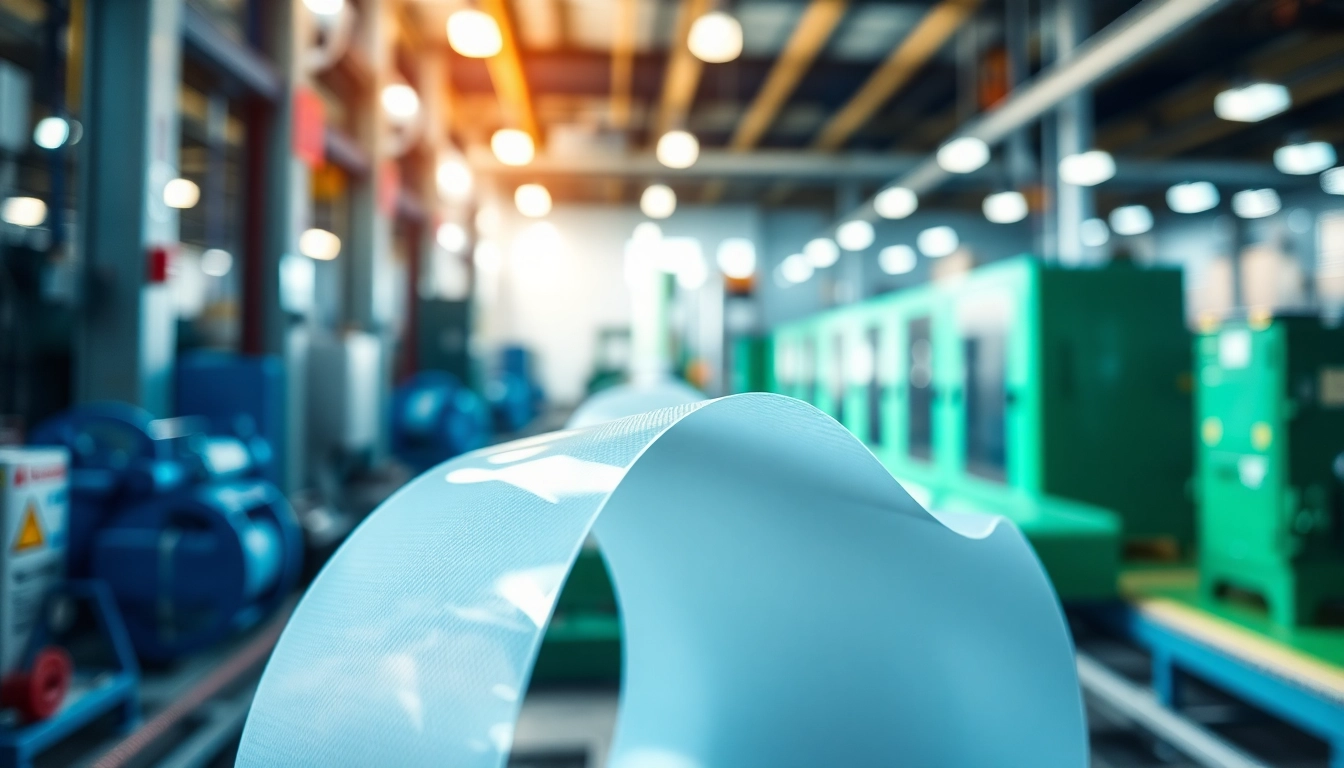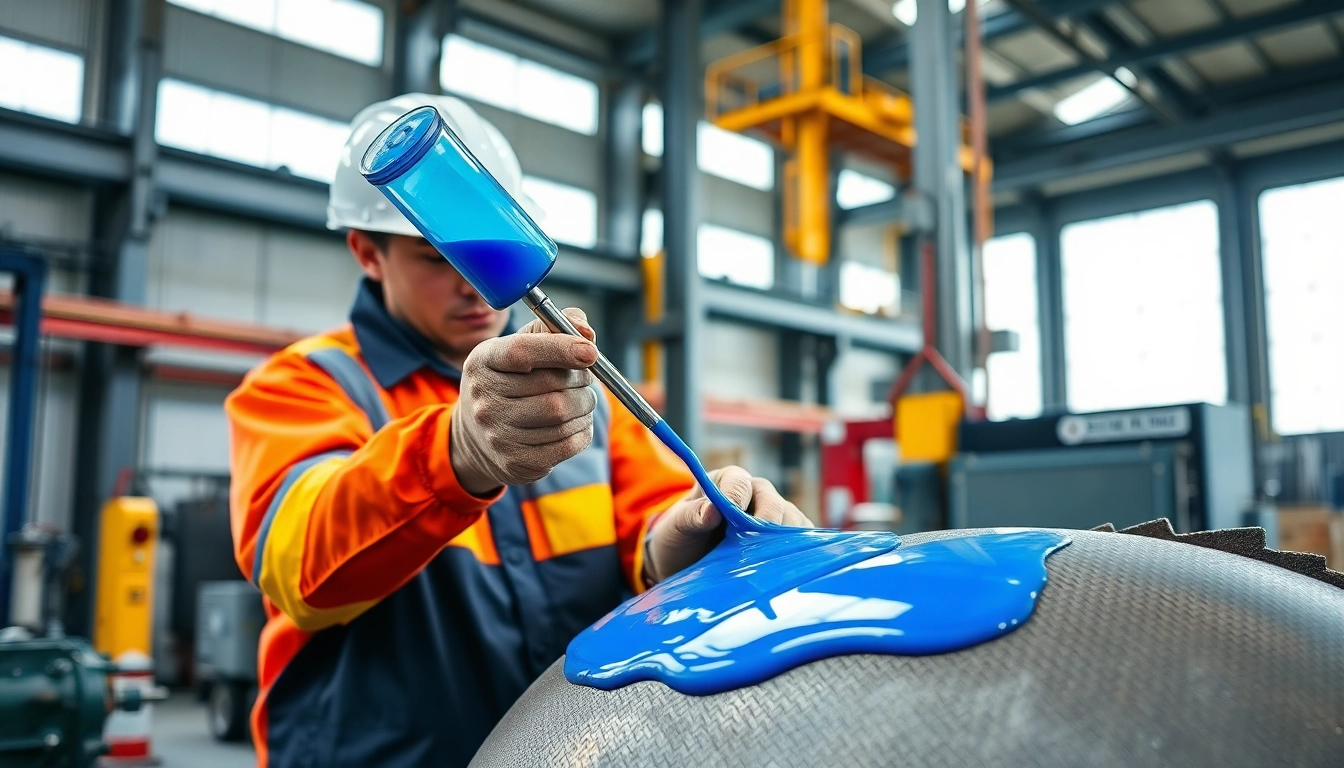Understanding Infusion Resins
Infusion resins are essential materials used in the production of advanced composite structures through various infusion processes. These specially formulated resins allow for the creation of lightweight, high-strength components that are vital across numerous industries, including aerospace, automotive, marine, and sporting goods. By utilizing techniques such as vacuum infusion, manufacturers can ensure superior material performance, minimal waste, and enhanced control over the final product’s characteristics. For those interested in delving deeper into the intricacies of infusion resins, this comprehensive article outlines their benefits, types, practical applications, best practices, challenges, and future trends.
What are Infusion Resins?
Infusion resins are low-viscosity, highly reactive resins specifically designed for the resin infusion process. This process involves the application of vacuum pressure to draw resin into a dry fiber preform, effectively saturating the fibers and reinforcing them with a solid matrix. The resulting materials exhibit high mechanical strength, improved durability, and superior protection against environmental degradation. Infusion resins can generally be classified into epoxy, polyester, and vinyl ester categories, each possessing unique chemical properties and performance metrics suited for different applications.
Benefits of Using Infusion Resins
The use of infusion resins offers several advantages, including:
- Enhanced Mechanical Properties: Infusion resins lead to composites with superior strength-to-weight ratios, making them ideal for applications requiring high performance without excessive weight.
- Optimized Fiber Saturation: The infusion method allows for complete saturation of the fiber layers, resulting in a more consistent material distribution, thereby improving the overall structural integrity.
- Minimal Air Entrapment: Because the resin is drawn into the fabric under vacuum conditions, air bubbles are significantly reduced, which increases the durability and performance of the final product.
- Eco-Friendly Manufacturing: Infusion techniques can minimize material waste and provide opportunities to utilize more sustainable raw materials, supporting environmentally friendly production practices.
Applications in Composite Manufacturing
Infusion resins are widely utilized in various sectors, with applications ranging from automotive to aerospace:
- Aerospace: Aircraft structures benefit significantly from the lightweight and strength characteristics of infusion resins, leading to improved fuel efficiency and performance.
- Marine: Boat hulls and other marine components made with infusion resins can withstand harsh environments while maintaining structural integrity.
- Automotive: High-performance vehicles utilize infusion resins in their construction to reduce weight while enhancing safety and performance metrics.
- Sporting Goods: Products such as bicycles, surfboards, and athletic equipment leverage the benefits of infusion resins for improved functionality and performance.
Types of Infusion Resins
Low-Viscosity Infusion Resins
Low-viscosity infusion resins are formulated to have a fluid consistency that allows for easy flow and saturation within the fiber preform. The primary objective of using low-viscosity resins is to ensure a quick and efficient infusion process, minimizing the time required for each cycle while maximizing the quality of the resulting composite. Key characteristics of these resins include:
- Shorter Gel Times: The quick setting times promote faster production, helping manufacturers increase throughput.
- Good Wetting Properties: The ability to effectively wet fibers ensures a homogenous mix and prevents dry spots within the structure.
Ecosystem-Friendly Infusion Resins
With an ever-increasing awareness of environmental impacts, there has been a significant push towards the development of eco-friendly infusion resins. These resins are often formulated from renewable resources, reducing dependency on petroleum-based products. Notable features include:
- Bio-Based Components: Infusion resins that contain bio-derived raw materials help decrease the carbon footprint associated with traditional resin production.
- Lower Volatile Organic Compound (VOC) Emissions: Eco-friendly resins often yield fewer VOCs, making them safer for both the environment and workers during processing.
High-Performance Infusion Resins
High-performance infusion resins are engineered for extreme conditions, offering superior mechanical and thermal properties. These resins are commonly used in specialized applications, including:
- Aerospace Components: Resins designed for high thermal resistance and low thermal expansion are critical for aerospace applications.
- Automobile Manufacturing: Performance racing vehicles often rely on high-performance infusion resins to maximize strength while minimizing weight.
Best Practices for Working with Infusion Resins
Preparation and Mixing Techniques
Proper preparation and mixing of infusion resins are essential to achieving optimal results. Recommended practices include:
- Precise Measurement: Accurately measuring resin and hardener according to the manufacturer’s guidelines ensures a proper chemical reaction, leading to desired curing times and mechanical properties.
- Thorough Mixing: Utilize mechanical mixers or manual mixing methods to ensure homogeneous blending of components. Avoid introducing air into the mixture during this process.
- Control Temperature: Maintain consistency in ambient temperature during the mixing and application process. Elevated temperatures can accelerate curing, while lower temperatures can slow the reaction.
Tools and Equipment Needed
Having the right tools and equipment is crucial for successful infusion resin applications. Some essential items include:
- Vacuum Pumps: A reliable vacuum pump is necessary to facilitate the infusion process by creating a sufficient vacuum to draw the resin through the fiber.
- Mixing Cups and Stirring Sticks: Use sturdy, disposable mixing cups along with appropriate stirring sticks to mix the resin and hardener effectively.
- Measuring Scales: Accurate scales are vital for precise measurement of resin components.
- Thermometers: Ensure the working environment’s temperature is appropriate for the desired curing conditions.
Safety Precautions
Safety should always be a top priority when working with infusion resins. Key safety considerations include:
- Protective Gear: Always wear gloves, goggles, and respiratory protection when handling resins to minimize exposure to harmful chemicals and fumes.
- Proper Ventilation: Ensure the working area is well-ventilated to reduce the build-up of harmful vapors that may arise during the mixing and curing processes.
- Storage Guidelines: Store resin components in a cool, dry place, following the manufacturer’s recommendations to maintain their integrity and effectiveness.
Challenges in Infusion Resin Applications
Common Issues and Solutions
Working with infusion resins can sometimes lead to challenges that affect the quality of the final product. Common issues include:
- Incomplete Fiber Wetting: This can lead to dry spots and weak areas within the composite. Solutions include adjusting resin viscosity or optimizing the infusion strategy by altering vacuum pressure and placement of resin feed lines.
- Air Trapping: Air entrapment can occur if the resin flow is not adequately controlled. Using automated infusion technologies or vacuum-assisted techniques can help mitigate this issue.
Understanding Cure Times and Temperature Effects
The performance of infusion resins is significantly influenced by cure times and temperature settings. Key factors to consider include:
- Cure times: Different resins gel and cure at varying rates. It’s important to adhere to the specifications provided by the manufacturer to avoid under-cured or over-cured materials.
- Temperature variations: Lower temperatures can prolong curing times, while higher temperatures may speed up reactions, potentially leading to difficulties in working with the resin. Monitoring temperature is critical throughout the process.
Factors Affecting Resin Flow
Several factors can influence the flow rate of infusion resin during the application process. These include:
- Fiber Layout: The arrangement and density of the fiber reinforcements can greatly affect resin flow. Unidirectional fabrics may require different strategies compared to woven fabrics.
- Viscosity Adjustments: The viscosity of the resin can be adjusted through the use of heating elements or selection of different resin formulations to optimize flow and saturation.
The Future of Infusion Resins
Innovations in Resin Technology
The landscape of infusion resins is rapidly evolving with innovations focused on enhancing performance and sustainability. Emerging trends include:
- Smart Resins: Development of resins that can monitor and adapt to changes in environmental conditions, enhancing their performance characteristics during the curing process.
- New Bio-Based Formulations: Increased research and investment in bio-resins designed to provide equivalent or superior performance compared to traditional petroleum-based resins.
Sustainability Trends in Resin Production
As sustainability becomes a primary focus within various industries, the infusion resin sector is not left behind. Trends in sustainable practices include:
- Reduced Waste: Development of manufacturing processes that minimize waste and enhance recyclability of composite structures are gaining traction.
- Transparency in Raw Material Sourcing: Companies are increasingly prioritizing ecological responsibility by sourcing raw materials from sustainable suppliers and providing clear insights into their supply chains.
Market Predictions for Infusion Resins
Market forecasts suggest an increasing demand for infusion resins across numerous industries, driven by the need for lightweight, high-strength materials. The expansion of renewable energy sectors, especially wind and solar power, is expected to further elevate the market. Moreover, innovations in material science and manufacturing techniques are likely to fuel the growth of infusion resin applications. Companies that prioritize research and development will be at the forefront of this growing market, providing cutting-edge solutions and sustainable alternatives that meet the evolving needs of an environmentally conscious world.










Leave a Reply